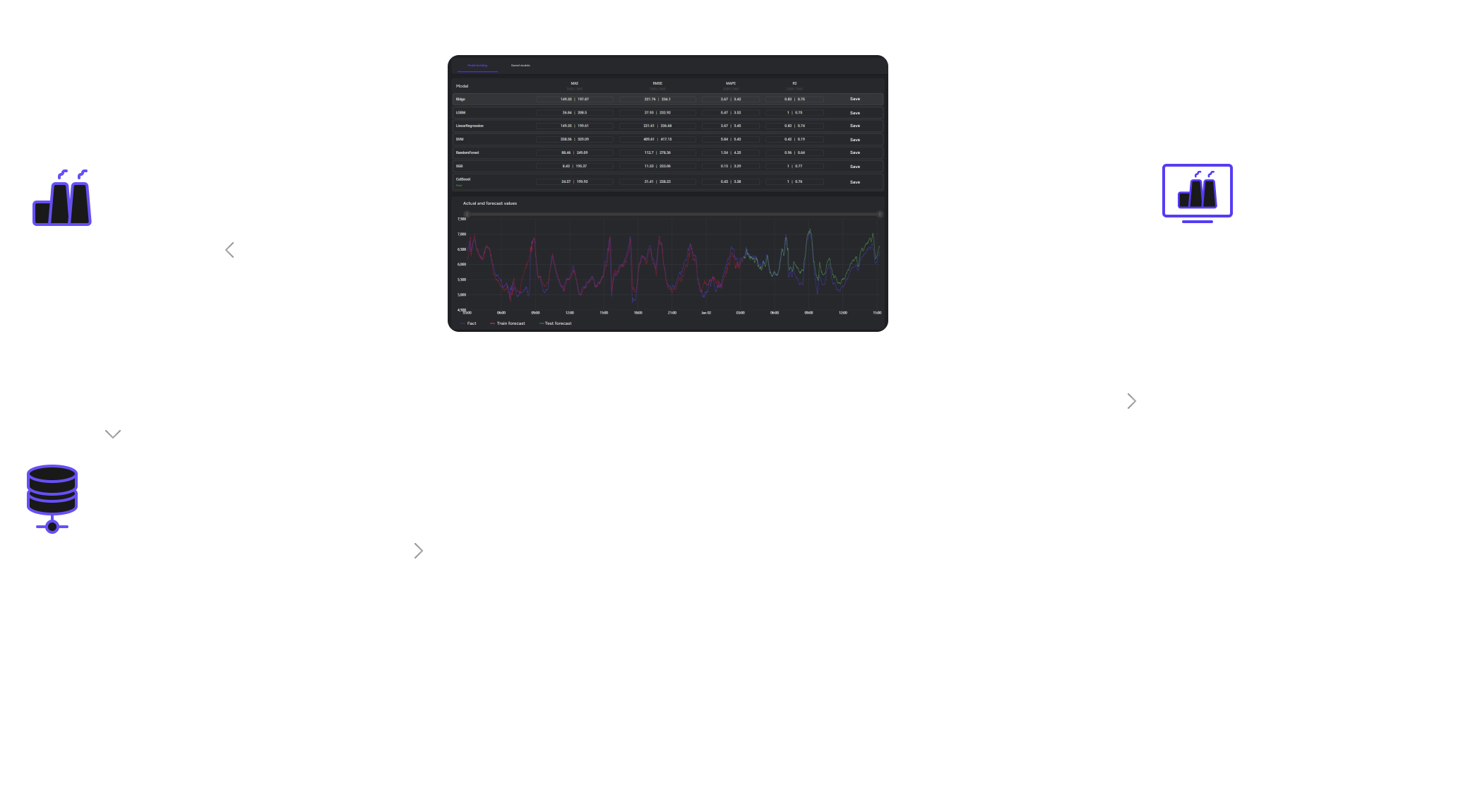Artificial Intelligence Platform Ditwinx for Continuous Production
Today, business leaders are facing a range of challenges, including reducing the impact of the human factor on processes, optimizing material consumption, identifying and eliminating bottlenecks, as well as reducing costs for maintenance and eliminating unplanned downtime and breakdowns. The solution to these problems can be found through the creation of digital twins.
A digital twin is a software representation of a real process that models its functioning under conditions of interference and the surrounding environment. It is built based on the analysis of data obtained from sensors, using machine learning. Digital twins enable enterprises to quickly detect physical problems, predict the outcomes of technological processes, improve product quality, and reduce the impact of the human factor.
What are the challenges in building digital twins and predictive models?
Building digital twins can be a complex process, requiring significant time and resources. This is due to the need to integrate technical information, process descriptions, and actual sensor data to create a predictive model. Statistical methods are typically used, and increasingly, machine learning methods are employed in creating such models.
However, achieving practical results, such as cost savings, increased productivity, and profitability, is a challenging task. Despite advancements in neural networks and data analysis technologies, successful implementation of digital twins requires deep expertise in both mathematics and the specific application domain. When building predictive models, it is crucial to choose the right metrics, understand how improvements in mathematical metrics relate to improvements in economic indicators, and select and apply an appropriate machine learning method, taking into account its limitations and tuning it for stable performance in the face of changing or incomplete input data. These are just a few of the questions that need to be addressed.
Building digital twins requires a comprehensive approach that involves not only technical aspects but also an understanding of business processes and enterprise goals. It is a process best undertaken with the involvement of experts in data, machine learning, and industrial processes to ensure maximum efficiency and successful application of digital twins in practice.
The digital platform Ditwinx.
The Ditwinx platform, developed by the team of specialists from Softline Digital, is a tool for creating digital twins, predictive, and recommendation models in enterprises. It allows the implementation of machine learning methods without the need for retraining personnel and involving data specialists.
With the Ditwinx platform, a pilot project can be quickly conducted (within 1-2 weeks), including an investigation of the applicability of modeling methods to a specific process, an analysis of data sufficiency, and an assessment of the achievability of the required metrics.
One of the distinctions of Ditwinx from other systems is that it not only provides a forecast but also justifies it. The platform highlights important parameters, identifies anomalous situations, and determines the accuracy of the forecast for each situation. This allows the operator to intervene if the situation goes beyond the set boundaries. Dynamic learning and determining the scope of applicability are important aspects of the AILine system.

In practice, Ditwinx is a software product that can be deployed both in a cloud environment and within the customer's infrastructure. To configure the product, it is necessary to specify input and output parameters, as well as parameters that need optimization. The system will detect anomalous values, ask questions about the data, highlight anomalous situations, and suggest their interpretation. It will also learn to work with incomplete data. As a result of the configuration, the system provides various interfaces and dashboards for operators, technologists, and managers. Operators and technologists are provided with recommendations for control actions, analysis of possible scenarios, and production forecasting. Management is provided with a consolidated plan that helps improve the overall manageability of the process.
The main advantages of the platform can be divided into three blocks:
Adaptability
- When conditions change (raw materials, processes, requirements), the technology can autonomously fine-tune models.
- Selection of the best AI method based on the situation.
- Utilization of knowledge about the technology along with actual data for more accurate modeling.
Ease of Scaling and Implementation
- Building a working prototype in one week.
- Integration with data collection and storage systems.
- Solution support by experienced professionals.
Convenience and Practical Benefits
- Detailed analysis of each forecast and recommendations: highlighting important parameters and anomalies at the moment.
- Scenario modeling: predicting how the process will behave with changing parameters.
- Individual dashboards: for operators, technologists, and management.

As a result, we have conducted a series of successful implementations and pilot projects. Our main focus areas include metallurgy, petrochemicals, and the agro-industrial complex. The platform has demonstrated its applicability in tasks ranging from flotation to ferroalloy consumption, from optimizing methylene chloride production to forecasting herd productivity, from burdening and ore grinding processes to predicting chemical composition and defective product rates. Based on our experience, when the tasks and processes are ready, the implementation of a pilot project takes up to 2 weeks. However, we can go through the entire process together from the beginning, starting with production analysis and task definition.


